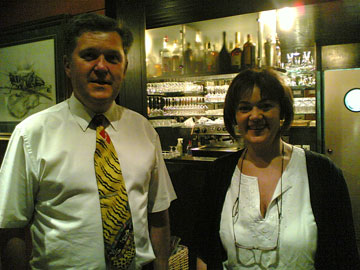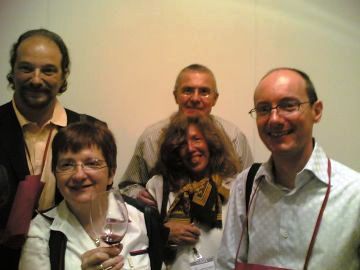by Martin Field
Indigestion, wine and sin
As a typical big eater and drinker, it’s hardly any wonder that I’ve suffered for years from chronic indigestion. I love highly tannic reds, white wines acidic enough to strip the duco from a car, smoky shots of single malt whisky, chili-laden food, and all that stomach attacking stuff.
So how has my doctor treated this indigestion so far? Never bothered mentioning it to her. Due no doubt to my early Catholic upbringing, my subconscious figured that the alimentary discomfort was spiritual vengeance for my sins of gluttony. I learned to live with it.
Balloon breath
Then Lucy went to the doc and complained about her ongoing indigestion symptoms. The doc gave her a capsule to swallow and 10 minutes later had her blow into a silver balloon. The balloon, complete with breath sample, then went off to the pathology lab for testing. The diagnosis? Indigestion caused by the bacterium Helicobacter Pylori.
She was prescribed a one-week course of Nexium – a triple dose regime comprising an acid suppressant and two different antibiotics. Four weeks later, she took the breath test again and the doc pronounced her cured.
HP source – Catching acid
Mmmm. Maybe I was also suffering from the dreaded H.P. Indeed, the doc’s fact sheet stated that the bug could be transmitted from person to person. So it was off to the clinic for some balloon blowing.
Yep, it turned out that my stomach lining also harboured the dreaded bug. The doc prescribed the same treatment; with similar success. I still eat and drink prodigiously but no longer experience the dreaded ‘heartburn’. More importantly, I’ve minimised the risk of reinfecting the family.
Prize winners
The 2005 Nobel Prize for medicine went to the two Australians, Barry Marshall and Robin Warren, who discovered H. pylori’s role in causing peptic ulcers, gastritis and various chronic stomach inflammations – some of which can lead to cancer. They also developed non-invasive diagnostic techniques and a cure – for which we should all be extremely thankful.
According to one H. pylori fact sheet I read, it is estimated that up to half the human population may carry the bacterium, although many carriers are asymptomatic; that is, they display no symptoms.
Gulper? Slurper? Chronic indigestion? Ask your doc for a silver balloon.
 Traveling for work is much more enjoyable if you can fit in some gastronomic discoveries. This week in Slovenia I took my friends Harry and Vondelle to the Gostilna Pri Danilu, in Reteče near Škofja Loka, close to Ljubljana. I had written a few notes on my last visit there about a year ago on this blog. This time my friend Tomaž Sršen was away in Munich where he was attending a concert, so while enjoying my dinner he sent me an SMS from Munich: “Aerosmith rocks!”.
Traveling for work is much more enjoyable if you can fit in some gastronomic discoveries. This week in Slovenia I took my friends Harry and Vondelle to the Gostilna Pri Danilu, in Reteče near Škofja Loka, close to Ljubljana. I had written a few notes on my last visit there about a year ago on this blog. This time my friend Tomaž Sršen was away in Munich where he was attending a concert, so while enjoying my dinner he sent me an SMS from Munich: “Aerosmith rocks!”.